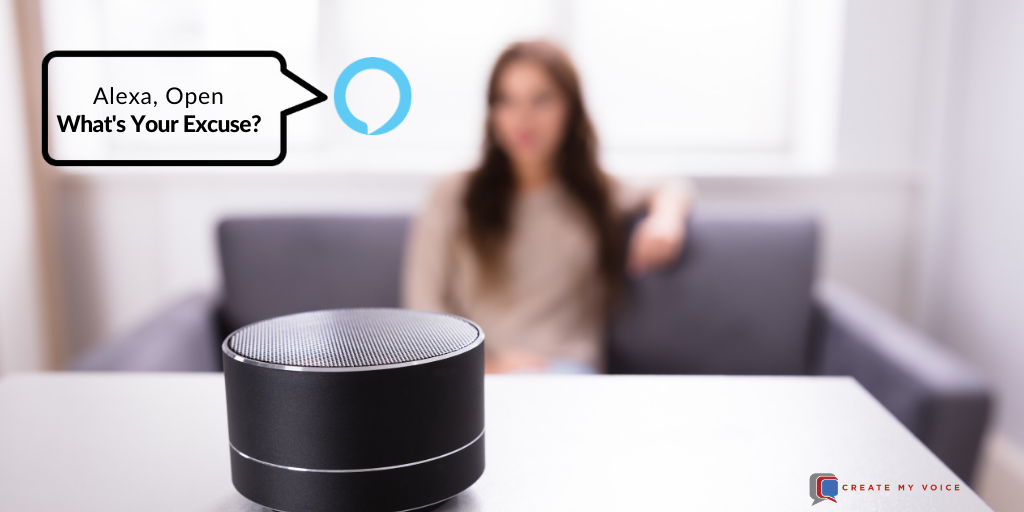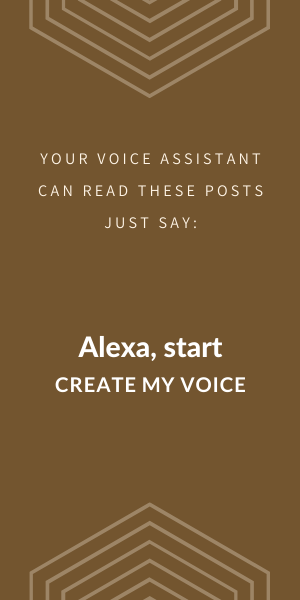 The Voice Technology within Smart Speakers (like Amazon Alexa and Google Home) is sometimes referred to as a Digital Assistant. While the Smart Speaker creators are making their Digital Assistants "smarter", both Google and Amazon have created a way to extend the functionality of their Digital Assistants. This means that we can make the Digital Assistant "smarter" by having a Voice App that knows how to talk about your intellectual property (IP).
The Voice Technology within Smart Speakers (like Amazon Alexa and Google Home) is sometimes referred to as a Digital Assistant. While the Smart Speaker creators are making their Digital Assistants "smarter", both Google and Amazon have created a way to extend the functionality of their Digital Assistants. This means that we can make the Digital Assistant "smarter" by having a Voice App that knows how to talk about your intellectual property (IP).
So, what makes these Digital Assistants smart?
We expect Digital Assistants to be able to figure out anything we say. We expect them to have Artificial Intelligence. The fact is that they still listen for certain words to know how to act. If you are interested in researching the difference between what we expect from these Digital Assistants and the current state, look up the General AI versus Narrow AI. We want our Digital Assistant to have General AI, but they are still getting better at Narrow AI.
Digital Assistants are pretty smart, and getting smarter all the time. There were a couple of recent CNet articles about commands you can give to your Smart Speaker of choice. The first article for Amazon Alexa is titled "Every Alexa command you can give your Amazon Echo smart speaker". And if you prefer Google, the second article is titled "Every Google Assistant command for your Nest speaker or display". Google and Amazon can understand a lot of instructions already, and the list is growing. A lot of these instructions are being developed internally by Amazon or Google. But as the popularity of Digital Assistants continues to grow, a growing list of third-parties are adding additional abilities.
So, how do these Digital Assistants know
So, how do these Digital Assistants know that the person speaking wants to engage with a particular Brand's third-party ability? Both Amazon and Google allow third-parties to add a custom Branded extension to their Digital Assistant. Amazon calls these extensions, Skills. Google calls these extensions, Actions. The generic term is, Voice Application or Voice App. And by letting third-parties expand the capabilities of their Digital Assistant, both Amazon and Google provided an explicit way for users to engage with third-party Voice Apps.
 Instructions to a Digital Assistant are composed of 4 parts: Wake Word, Trigger Phrase, Invocation Name, and Intention. The Wake Word instructs the device to start listening. The Trigger Phrase provides the domain of the instruction. The Invocation Name is the Name of the third-parties Voice App. And the Intention is an optional instruction. If an Intention is not provided, then an implied or default Intention will be used.
Instructions to a Digital Assistant are composed of 4 parts: Wake Word, Trigger Phrase, Invocation Name, and Intention. The Wake Word instructs the device to start listening. The Trigger Phrase provides the domain of the instruction. The Invocation Name is the Name of the third-parties Voice App. And the Intention is an optional instruction. If an Intention is not provided, then an implied or default Intention will be used.
While these instructions are similar between Google and Amazon, they are not identical, so let's review each in turn.
For Google, the Wake Phrase is either "OK Google" or "Hey Google". And there are three core Trigger Phrases that indicate that a third-party branded Voice App should be engaged. These Trigger Phrases are: "Ask", "Talk to", and "Speak to". There are several variations on these Trigger Phrases such as "I want to Speak to", or "Let me Talk to", or "Can I Talk to". When the Digital Assistant hears any of these Trigger Phrases, it then looks in its Action Library for the Action which matches the Invocation Name. The Voice App then decides what to do based on the Intention provided.
For Amazon, the Wake Word is chosen by the owner of the Smart Speaker, and can be one of four words: "Alexa", "Echo", "Amazon", or "Computer". After the Wake Word, comes the Trigger Word or Phrase. Amazon has more Trigger Words than Google and will even launch a Skill without a Trigger word (in other words, the Trigger Word is optional). The list of Trigger Words include: "run," "start," "play," "resume," "use," "launch," "ask," "open," "tell," "load," "begin," and "enable." And like Google, the Trigger Words can be prefaced with Phrases like "Can you...", or "Let's...", or "I want to...".
Examples
Let's end with several examples for using a Brands Voice App on both Google and Amazon. The following is a partial list of different ways of starting a Voice App with the Invocation Name of "What's Your Excuse" on Amazon Alexa Smart Speakers:
Alexa, Enable What's Your Excuse
Alexa, Open What's Your Excuse
Alexa, Play What's Your Excuse
Alexa, Ask What's Your Excuse to play the latest episode
Alexa, Ask What's Your Excuse to tell me about The Blind Blogger
Alexa, Ask What's Your Excuse to search for episodes on Motivation
And here are examples of starting the same Voice App on Google Assistant devices:
OK Google, Talk to What's Your Excuse
OK Google, Ask What's Your Excuse to play the latest episode
OK Google, Ask What's Your Excuse to tell me about The Blind Blogger
OK Google, Ask What's Your Excuse to search for episodes on Motivation
This was just a partial list of how to start a Voice App and the potential instructions that the Voice App knows how to handle. A full list of instructions will be published in a subsequent post.

